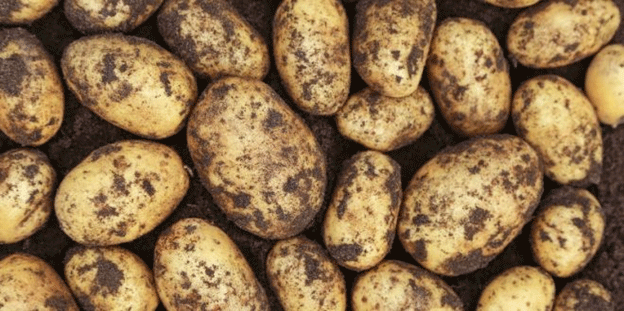The U.S. potato retail market experienced a significant boost in sales volume between July and September 2024, with a 5.4% increase in overall volume compared to the same period last year. This growth is being fueled by various potato categories, including fresh potatoes, chips, frozen potatoes, and deli-prepared sides. While consumer prices fell 5.3%, the steady dollar sales of $4.5 billion reflect an evolving consumer preference and a broader shift in how people are purchasing potatoes.
Key Drivers of Growth
Several factors contributed to the overall growth in potato sales, with frozen potatoes (6.6%) and potato chips (6.5%) seeing the second-largest volume increases. In particular, fresh potatoes experienced a notable 5.0% increase in volume sales. This was driven by higher demand for a variety of fresh potato types, including russets, yellow potatoes, tiny potatoes, and medley varieties. Among these, russet potatoes—accounting for 65% of fresh potato sales—saw the largest increase with a volume rise of 10.6%.
Interestingly, smaller pack sizes of fresh potatoes also gained popularity. Packs weighing less than 2 pounds and 2-4 pounds saw increased sales in both volume and dollars, reflecting a trend towards more convenient, smaller-sized purchases. Conversely, larger packs, such as five-pound and ten-pound bags, showed a rise in volume sales (2.0% and 7.9%, respectively), but experienced declines in dollar sales (-10.3% and -17.2%, respectively).
Consumer Trends: Affordability and Convenience
A key trend observed during this period was the shift in consumer buying behavior. The average price per pound of fresh potatoes decreased by 13%, dropping to $0.95. While the drop in price has made fresh potatoes more affordable, it has also influenced sales patterns. Smaller, more affordable pack sizes are appealing to consumers seeking value and convenience, particularly in an environment of lower food prices. This trend suggests that shoppers are prioritizing cost-effective, ready-to-cook solutions that fit their household needs.
The increase in deli-prepared sides (7.3%) and refrigerated potatoes (5%) highlights another aspect of changing consumer preferences—convenience. More consumers are turning to prepared or semi-prepared options for quick, easy meals. Despite the challenges faced by certain categories like canned potatoes (-5%) and instant potatoes (-1.4%), overall demand for potatoes remains strong.
Price vs. Volume: Balancing Dollar Sales
While consumer prices for potatoes have fallen, the total dollar sales of potato products remained steady at $4.5 billion, indicating that price reductions may have driven higher volume sales without significantly affecting overall revenue. Notably, frozen potatoes held steady in dollar sales despite an increase in volume, while categories like fresh potatoes saw volume growth with a decrease in dollar sales.
This price-volume relationship underscores the importance of consumer affordability, which helps drive purchases, even as higher-volume sales do not always correlate directly with dollar sales growth. The adaptability of retailers and producers in adjusting to these trends will be key to future success in the potato market.
Conclusion: Sustainability and Adaptation in the Potato Market
The 5.4% increase in potato retail sales volume from July to September 2024 indicates a robust market for potatoes in the U.S., with growth in key categories driven by affordability, convenience, and consumer preferences for smaller pack sizes. Fresh potatoes, particularly russets, lead the charge in volume sales, but there is also increasing demand for processed products like chips and deli-prepared sides.
As we look forward, the potato industry must continue to adapt to shifting consumer trends, including a greater demand for affordable, convenient options. The consistent demand for fresh and frozen potatoes, coupled with price sensitivity, will likely guide market strategies in the coming months. Farmers, producers, and retailers who can balance production costs, consumer affordability, and innovative offerings will be best positioned for success in a competitive and evolving market.

